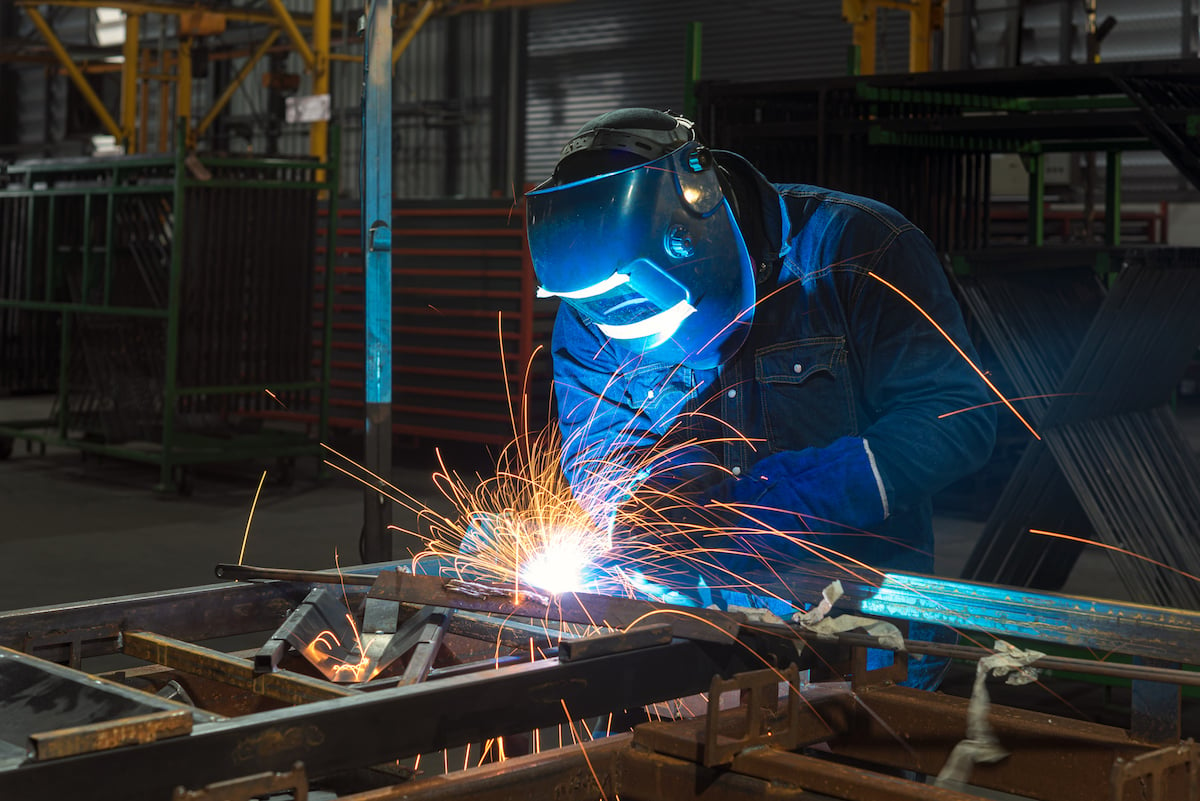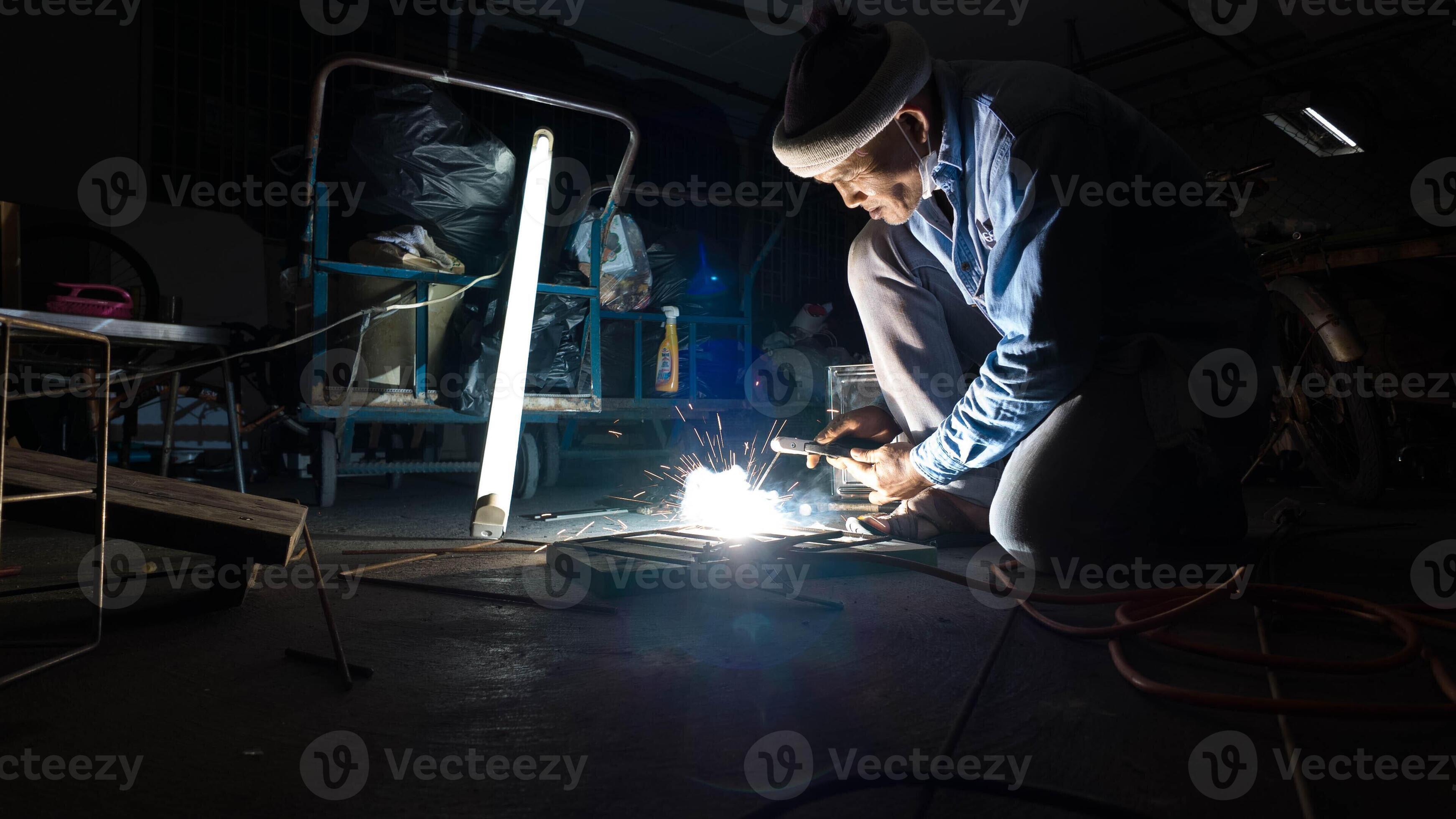What causes cracking in welds and how Montana Mobile Welding and Repair avoids them
All Regarding Welding: Secret Insights Into Techniques and Best Practices for Success
Welding includes a selection of techniques, each suited for particular materials and applications. Comprehending these approaches, such as GMAW, SMAW, and TIG, is necessary for accomplishing suitable results. The right equipment and security practices can not be forgotten. As preparation and fixing play critical functions in the welding process, mastering these components can substantially improve the high quality of the end product. What are the essential aspects that guarantee a successful weld?
Understanding Various Welding Techniques
Welding methods encompass a selection of techniques, each fit to certain applications and products. Among one of the most typical techniques are Gas Metal Arc Welding (GMAW), Shielded Metal Arc Welding (SMAW), and Tungsten Inert Gas Welding (TIG) GMAW, additionally called MIG welding, is preferred for its speed and versatility, making it optimal for thin products. SMAW, or stick welding, is favored for its simpleness and efficiency in outdoor atmospheres, particularly with thicker steels. TIG welding provides accuracy and control, making it suitable for complex job and non-ferrous metals (Montana Mobile Welding and Repair Belgrade Welding). Each technique has its distinct advantages and factors to consider, permitting welders to select the most effective approach based on the job's needs, material type, and desired end results. Recognizing these methods is important for successful welding
Essential Welding Devices and Tools
While different welding methods call for certain skills, the appropriate tools and tools are similarly vital for attaining top quality results. Essential welding devices consists of welding machines, which differ depending upon the strategy-- such as MIG, TIG, or stick welding. Safety equipment, including handwear covers, headgears, and aprons, guarantees safety and comfort throughout the procedure. In addition, fixtures and clamps assist protect products in position, guaranteeing accuracy in welds. Consumables like welding rods, cord, and securing gas are also vital parts that affect the top quality of the weld. Devices such as mills and cutters assist in surface area prep work and post-weld ending up, contributing to an expert end result. Purchasing premium devices eventually enhances the efficiency and efficiency of welding tasks.
Safety Practices in Welding
Proper safety and security methods are crucial in the welding sector to shield employees from prospective threats. Welders should use ideal individual safety devices (PPE), including headgears with correct shading, gloves, and flame-resistant garments. Adequate air flow is important to reduce direct exposure to dangerous fumes and gases generated during the welding process. Furthermore, employees ought to be trained in the appropriate handling of welding tools to stop accidents. Fire precaution, such as maintaining combustible materials far from the welding area and having fire extinguishers easily available, are essential. Routine examinations of devices and work spaces can help determine possible risks prior to they result in crashes. By adhering to these safety techniques, welders can produce a safer working atmosphere and reduce risks related to their trade.
Preparing Materials for Welding
Preparing materials for welding is an essential action that considerably influences the high quality and honesty of the end product (Montana Mobile Welding and Repair Belgrade Fabrication). Proper preparation involves cleaning the surface areas to remove pollutants such as oil, dust, and rust, which can compromise the weld. Methods such as grinding, sanding, or using solvents are typically utilized to attain a clean surface area. Additionally, guaranteeing that the materials mesh comfortably is vital; gaps can result in weak welds. It's likewise important to take into consideration the positioning and positioning of the components, as this will certainly impact the simplicity of welding and the final outcome. Lastly, choosing the proper filler product and making sure compatibility with the base steels is necessary for attaining solid, durable welds
Tips for Achieving High-Quality Welds
Attaining premium welds calls for focus to information and adherence to best methods throughout the welding process. Proper joint preparation is crucial, making sure surface areas are free and clean from pollutants. Picking the appropriate filler material and welding technique based upon the base metals is essential for optimal bonding. Maintaining constant travel speed and angle while welding can advertise and stop problems uniformity. Furthermore, controlling heat input is crucial; too much warmth can result in warping and damaged joints. If necessary, frequently checking the welds during the process permits for prompt modifications. Using appropriate post-weld therapies, such as cleaning and tension relief, can improve the toughness and integrity of the weld, eventually guaranteeing a successful result.
Fixing Common Welding Issues
Welding frequently presents obstacles that can affect the high quality and integrity of the end product. Common concerns such as porosity, inconsistent weld grains, and getting too hot can emerge, each needing specific repairing methods. Understanding these troubles is crucial for welders to improve their skills and accomplish excellent results.
Porosity Troubles Discussed
Although porosity can typically be overlooked, it stays an essential problem in welding that can jeopardize the honesty of a finished item. Porosity refers to the existence of small gas pockets within the weld bead, which can compromise the joint and lead to premature failure. This problem normally arises from pollutants, moisture, or improper click to read shielding gas insurance coverage during the welding procedure. To minimize porosity, welders ought to validate that the base materials are clean and dry, utilize proper protecting gases, and keep constant welding criteria. On a regular basis evaluating the tools and setting can likewise help identify prospective problems prior to they materialize in the weld. Addressing porosity effectively is necessary for attaining solid, sturdy welds that satisfy high quality standards.

Inconsistent Weld Beads
Inconsistent weld beads can substantially impact the top quality and strength of a finished item. Various aspects add to this concern, including improper travel rate, incorrect amperage setups, and irregular electrode angles. When the welder relocates too promptly, a bead might appear slim and lack penetration, while moving too gradually can create extreme build-up. In addition, using the incorrect amperage can result in either undercutting or too much spatter, both of which concession weld stability. The welder's strategy, such as inconsistent lantern movement, can likewise lead to uneven bead appearance. To alleviate these problems, welders need to concentrate on preserving consistent, controlled movements and making certain appropriate tools setups to accomplish harmony in their welds. Consistency is key to attaining strong and reliable welds.
Overheating and Warping Issues
Extreme warmth during the welding process can lead to considerable getting too hot and warping issues, affecting the architectural integrity of the workpiece. These problems usually show up as distortion, which can endanger positioning and fit-up, making additional setting up challenging. Aspects adding to overheating include the selection of welding criteria, such as voltage and take a trip rate, along with the sort of material being welded. To minimize these issues, welders need to keep constant travel speed and ideal warm input while keeping an eye on the work surface temperature. Furthermore, preheating or post-weld warm treatment can help minimize anxieties triggered by quick air conditioning - Montana Mobile Welding and Repair. Normal assessment and adherence to finest methods are important in avoiding overheating and ensuring the longevity and integrity of bonded structures
Regularly Asked Questions
What Are the Career Opportunities in the Welding Market?
The welding market offers varied job opportunities, including placements as welders, instructors, examiners, and engineers. Specialists can operate in production, building, aerospace, and vehicle sectors, taking advantage of strong demand and competitive wages in numerous roles.
How Can I Enhance My Welding Rate Without Compromising Top Quality?
To enhance welding speed without compromising quality, one should exercise effective strategies, preserve devices, maximize setups, and boost hand-eye sychronisation. Regular training and looking for comments can also substantially add to attaining quicker, top notch welds.
What Accreditations Are Offered for Welders?
Many accreditations exist for welders, including those from the American Welding Culture (AWS), the National Center for Construction Education and Study (NCCER), and various industry-specific organizations. These credentials boost employability and demonstrate skill efficiency.
Exactly How Does Welding Impact the Characteristics of Metals?
Welding affects the homes of steels by altering their microstructure, which can bring about adjustments in stamina, ductility, and solidity. Warm input and air conditioning prices throughout the process significantly impact these material features.
Can I Bonded Dissimilar Metals Together?
